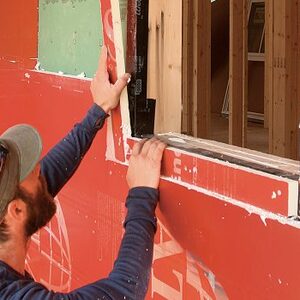
This month Pete offers an etymology lesson, proposes a hierarchy for the four control layers (water, air, vapor, and thermal), and issues a call for greater responsibility on the part of architects, builders, tradespeople, and product manufacturers. For her part, Ann highlights the pivotal role of yet another player—Mother Nature—in the integrity equation, with some building-industry history and cautionary tales.
From Pete:
Integrity of buildings and professionals
I am a bit of a word geek—my dad taught Latin, Greek, French, Italian, and German most of my years at home—so looking up the etymology of the word integrity was either impulsive or compulsive.


We often think of the term integrity as applying to people, but it is an excellent word choice for the topic of a building envelope’s performance. Integrity is integral to the building, as well as the professionals who work on its enclosure. I am adamant that because we are asking so much more of our buildings these days, we must ask more of building professionals, too.
So, how does an enclosure achieve integrity? It goes back to etymology: the Latin root integer means complete, whole, or sound.
The soundness of a building enclosure is determined by the completeness of its control layers: water, air, vapor, and thermal—in that order of priority. So, put your money into bulk-water management as the top priority, with air tightness a close second. Vapor is more than a bit further down the list, and thermal is last. (See GBA webinar, “Walls That Work—An Intro to the Four Control Layers” and GBA blog, “Using the Pen Test for…
Weekly Newsletter
Get building science and energy efficiency advice, plus special offers, in your inbox.

This article is only available to GBA Prime Members
Sign up for a free trial and get instant access to this article as well as GBA’s complete library of premium articles and construction details.
Start Free TrialAlready a member? Log in
















4 Comments
I'm really enjoying the complementary perspectives Peter and Ann bring to these blogs.
In my earlier life working for a mid-sized architecture firm I remember sending letters to the developer we were working with detailing the variations they had made from our drawings and specifications. Their response was "Hey - what's this all about? Aren't we on the same side?". The letters did sour our relationship a bit, but proved handy when the buildings later needed remediation and the condo board was looking for who to sue. Not everybody who "touches the enclosure" has much say in how it's touched.
Ann's polemic against curtain walls reminded me of another effect of all those windows in a description I read of Philip Johnston's famous Glass House that really stuck with me: "It manifests a megalomaniacal possessiveness over the surrounding landscape and the experience of anyone who enters".
I enjoyed the article. I'm not so fond of the pink foam in the illustration. Can we recolor that white for EPS or gray for graphite infused EPS?
Good article. One minor quibble: I often hear builders and architects repeat the rule that any glazing within 18" of the floor must be tempered. According to the IRC, glazing has to meet all four of these rules to be considered a hazardous location (e.g., requiring tempering):
1. exposed area of individual pane >9sf
2. bottom edge of the glazing <18" above floor
3. Top edge of the glazing >36" above floor
4. Walking surface located within 36" of the glazing
Using these rules, I have had several occasions where tempered glazing was not required within 18" of the floor.
I especially like Ann's final thought:
"The moral of this post? Because the house is a system, we ignore Mother Nature at our peril. She is relentless in her exposure of shortcomings in integrity, and the building enclosure is where she shines her light of criticism most blindingly."
Michael,
Your post sent me down a rabbit hole. Our building codes up here in Canada mandated safety glass in a few conditions. Among them was the requirement for it on any windows on stair landings. Another was any window with a sill less that 12" above the finish floor. Looking a the 2018 BC code I can't find either of those. It seems now to be restricted to shower glass, and glass in or near entry doors.
Log in or become a member to post a comment.
Sign up Log in